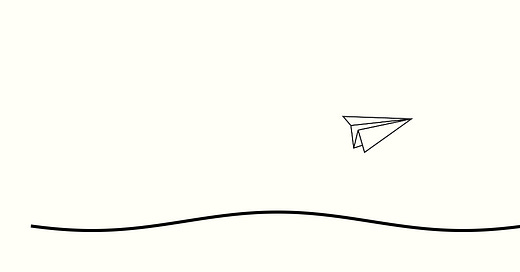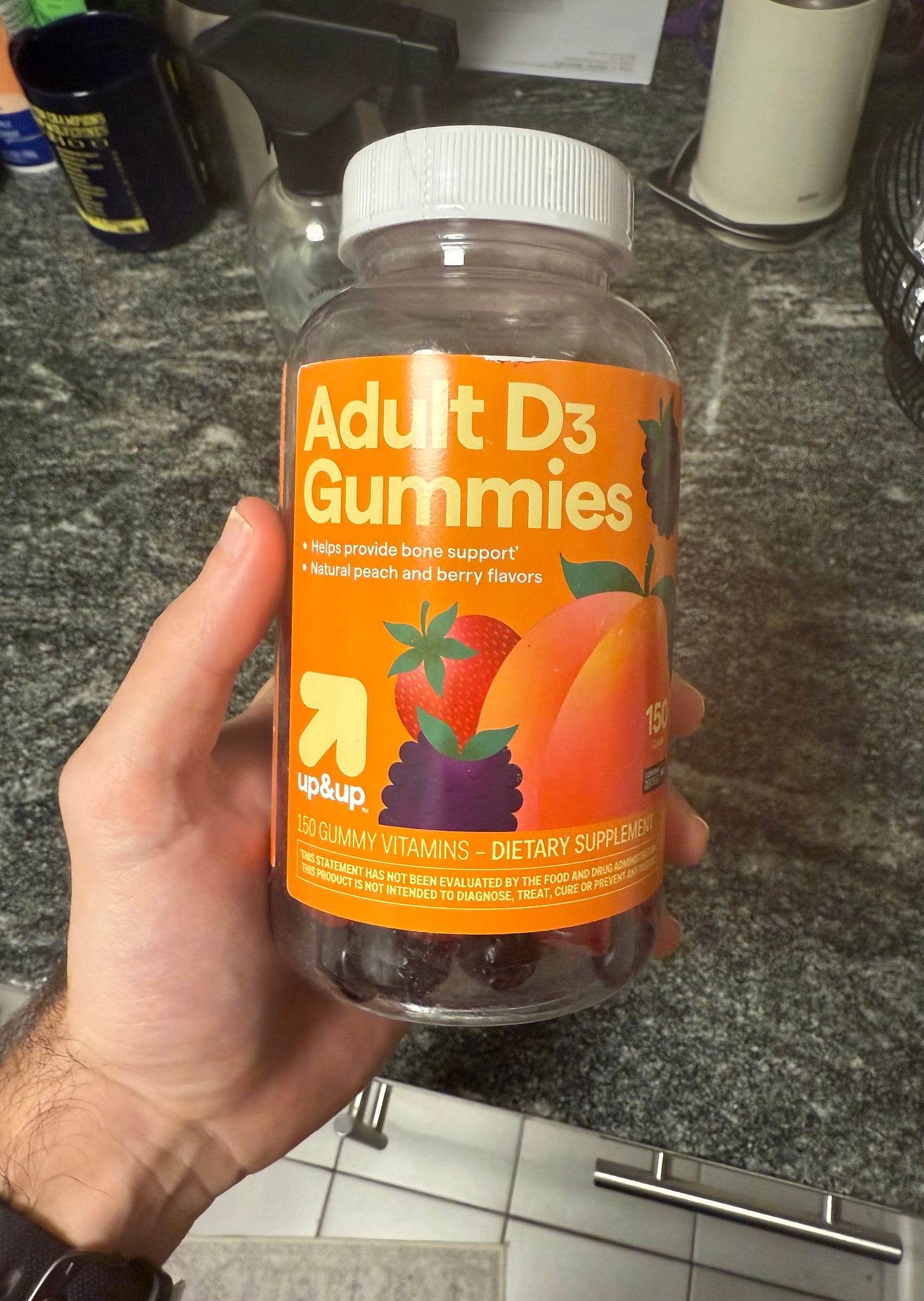Be a painkiller, not a vitamin.
In the startup world, this phrase is gospel.
A painkiller is something people can’t live without. A vitamin is a nice-to-have supplement to your life.
If you want to build a successful product, they say make a painkiller.
And now? We’ve got painkillers for everything.
We’re overprescribed.
Have some downtime? Here’s an algorithmically curated feed so you never have to be alone with your thoughts.
Can’t think what to say? Here’s a response that’s optimal for your conversation.
Need a friend? Talk to a perfectly tuned AI friend instead of reaching out to a real one.
We’re being prescribed painkillers for problems that aren’t even real problems—solutions that make us feel like we’re fixing something when all they really do is make us more dependent.
So today, I’m making a formal request: stop prescribing me painkillers.
Instead, I hope product designers focus more on making vitamins.
Defining Pain
Pain is subjective, but it’s also part of life.
Some painkiller technologies solve real, pressing issues at both a personal and business level:
Real-time translation tools break down language barriers, making global communication seamless.
Medical AI detects diseases early, preventing suffering and saving lives.
Assistive tech like voice-to-text and screen readers empower people with disabilities.
Organizational platforms streamline work, reducing friction and frustration instead of creating distractions.
Not all painkillers are bad.
The problem is when everything is treated as an urgent pain that needs an instant fix.
Some things are just part of living. If we numb every human experience, what’s left to genuinely feel?
Overdosing
Tech companies push these quick fixes on us like the addicts we are.
Look at the Friend AI wearable—a device that records your life and talks to you about it, so you never have to experience a moment alone or, even worse, use your own imagination.
When it was first announced, people thought it was some sort of dystopian, venture-backed joke.
It’s not.
It’s marketed as a way to solve the “pain” of experiencing things ourselves, remembering things ourselves, or building a real human relationship with another person.
But the more painkillers we take, the worse we feel.
Even sleep is something tech companies see as a competitor.
Reed Hastings, CEO of Netflix, literally said this out loud in an interview in 2017:
“You get a show or a movie you're really dying to watch, and you end up staying up late at night, so we actually compete with sleep.”
Not another streaming service. Not another entertainment platform. Sleep.
The most fundamental biological need we have is a battleground for engagement metrics for Netflix, Meta, and all the other tech companies .
This is what happens when every product is designed as a painkiller.
Everything must be “optimized.” Every inefficiency must be removed. Every second of your attention must be extracted, monetized, and turned into growth.
It’s not so different from the opioid crisis—a literal epidemic that started because pharmaceutical companies convinced people that everyday discomfort required powerful, expensive medication.
That minor pain was something to be numbed, not lived through.
And now, we’re doing the same thing digitally.
We are overprescribing technology the same way we overprescribed opioids.
Social media became the painkiller for loneliness. Now, we don’t have to feel disconnected from everyone in the world.
Streaming became the painkiller for boredom. Now, we don’t know how to be alone with our thoughts.
And now, AI assistants are becoming the painkiller for thinking. Now, we are beginning to outsource more of our decisions and creativity instead of working through them ourselves.
And just like opioids, the “cure” becomes a painful, consequential addiction.
After all, it’s no coincidence tech companies and drug dealers are the only ones who refer to their customers as “users.”
They don’t want you to feel better. They want you to stay on the drug.
Gimme Gummy Vitamins
If you’ve made it this far into my soapbox rant, you might be thinking: Pete, are you just anti-big tech raking in the big bucks?
No, I’m not. But I am pleading with you.
In a world of painkillers, make a goddamn gummy vitamin.
The products we make do not need to be designed to be addictive and essential like a painkiller.
A product, by comparison, should be a vitamin gummy.
These gummies are fun, flavorful, and genuinely enjoyable. Better than the first dopamine rush from opening Instagram in the morning.
Gummies create joy while providing a small, often intangible benefit.
And if I miss a day?
I will not die.
I will not be writhing in pain.
I will not be anxious, waiting for my next dose.
I am not addicted to my gummy vitamins (I swear!)
I simply enjoy them.
We should make more products like this.
Not just less addictive, but better designed.
You might argue that a product without urgency can’t be a profitable business. That without a painkiller’s indispensability, there’s no product-market fit.
But I don’t believe that.
The best products don’t trap you. They respect you.
Here’s what that looks like:
Respect time, don’t capture it. The best designs give users what they need, let them enjoy it, and get out of the way.
Create engagement, not dependence. Great products are ones we look forward to using, not ones we feel withdrawal from.
Optimize for enjoyment, not addiction. A thoughtfully designed product doesn’t need to rely on streaks, dark patterns, or artificial FOMO to be valuable.
Be a beautiful tool, not a slot machine. The best tools make people’s lives easier, not more frantic with gamified, random rewards.
Some pains demand a painkiller.
Some things aren’t pains at all—we just need a gummy vitamin.
Walking the Walk
I want to design for joy, not compulsion.
So many consumer apps rely on algorithmic feeds, dopamine loops, and FOMO to drive engagement.
I want to resist the urge to build things that feel like painkillers.
n-gen, Day by Data, Ahoy—every project I’ve built is an attempt to build something like a gummy vitamin.
Something people enjoy, but don’t depend on. Something well-designed, but not engineered for addiction.
I want to make elegant, intentional, joyful experiences—the kind you love using but don’t feel trapped in.
Good design isn’t just less harmful—it’s actively better.
Just make something that is good. Not something that is addicting.
I might not make as much money as the companies pushing opioids, but I’ll be fine selling gummy vitamins.
After all, art doesn’t exist to numb you.
I can’t take these damn painkillers anymore.
Just gimme the vitamins.
If we all keep peddling stronger, shinier painkillers to take our attention away from something else, we all lose in the end.
What I Did This Week — All Aboard
This week, I made a bit of progress on Ahoy.
I polled a few folks on Substack and Twitter and really enjoyed a paper airplane ‘vessel’ that came out of the suggestions.
I mean look at this little fella!
This was quite a cute addition and feels really smooth.
I’m also working on a bit of a tighter onboarding experience with a bit more storytelling and haptics.
If all goes right, I hope to get this launched in the next week or two! Please let me know if you’d like to test it before launch.
Something Beautiful — The Tangled Part
This week, I want to highlight
’s illustration of the tangled part of the creative process and life.This illustration is so elegant, conveying how messy the process can feel sometimes with only three words!
Haley’s a must-follow if you love illustrations with a bit of whimsy, emotion, and truth. I always enjoy seeing her work pop in my feed and inbox :)






I love this perspective! "Vitamins" often make the design/building experience so much more fun and engaging too.
Thanks for sharing ❤️